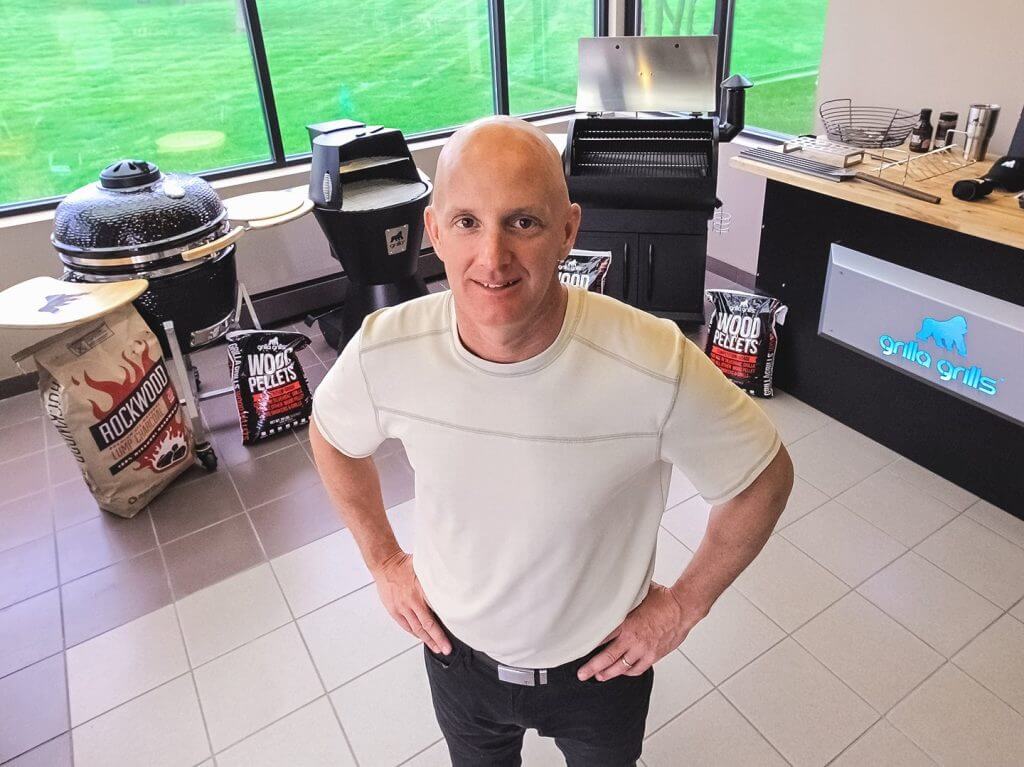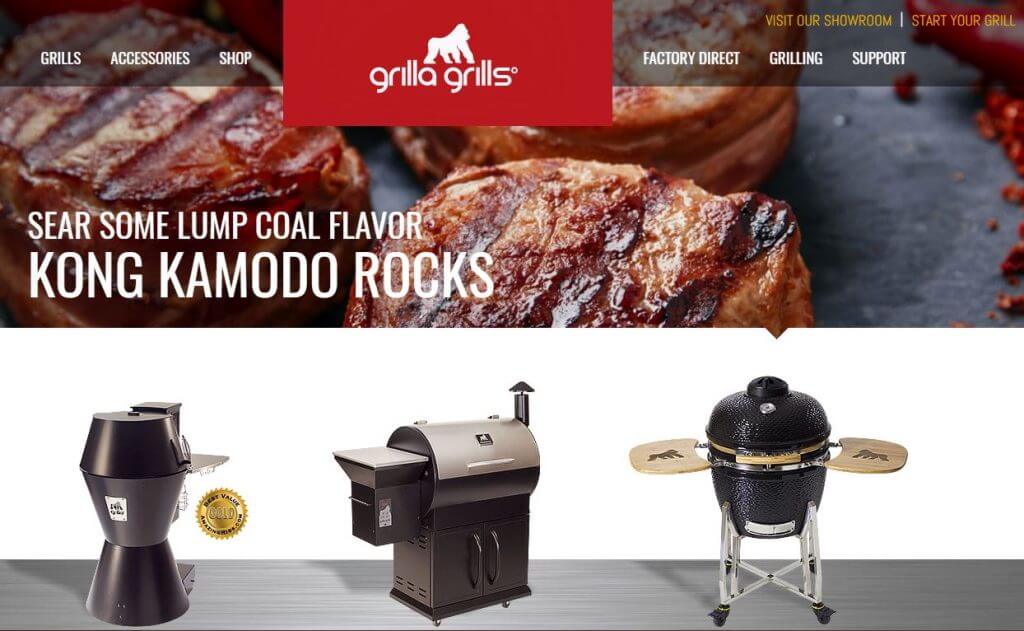Founded in 2012, Grilla Grills stemmed from a conversation between two men on a fishing trip. As Dave Shidler (Owner at Grilla Grills) and Mark Graham (Head Engineer) gathered around a campsite to start grilling a plate of ribs – it occurred to them: Why do all pellet grills look the same?
Fast forward 7 years, Grilla Grills is now one of the rising names within the grill industry, specifically known for their unique technology.
But their journey to success wasn’t without its fair share of obstacles.
We sat down with Graham, to talk about why Grilla Grills decided to move their US-based manufacturing overseas and shift from a dealership based model to direct-to-consumer.

Grilla Grill Premieres Unique Technology
A little over a decade ago, Graham and Shidler thought it would be a good idea to start manufacturing pellet grills as a side venture to Fahrenheit Technologies, Inc., a wood furnace company, located in Holland, Michigan.
Although pellet grills were still fairly new to the BBQ and grilling community, they saw a big opportunity to jump into this market.
Following hundreds of design hours, the official Grilla Grill prototype was born in 2012, producing “fall-off-the-bone tenderness that will make your grilled or smoked meat the talk of the barbecue.”
Not only was the “Gorilla” marketing catchy and clever, the extremely effective convection heat technology was impressive and immediately set the Grilla Grill apart from its competitors.
The good news: When Grilla’s signature pellet grill first hit the market, it was greeted with positive reviews from it’s customers (like the one below):

The bad news: The $1,500 price tag was a bit too high for the target market. After several years of operation – Grilla Grills decided it was time to reevaluate their business operations.
Grilla Grills Relaunches New Business Model
To reduce the product’s price point, Grilla Grills set out to make 3 major changes to their current business model including:
- Transition their manufacturing efforts from the United States to China.
- Expand their product line to include other grill types & accessories.
- Shift from a “distribution model” to direct-to-consumer selling.
1. Manufacture Products in China
“When we started out, we wanted to manufacture all of our products in the United States, but soon enough we realized the price point was just too high for our customers,” Graham said.
Committed to maintaining the quality of Grilla Grills, the company vetted dozens of suppliers overseas.
“Eventually, we did find a Chinese manufacturer who was in alignment with our strict product qualifications,” he said.
About Manufacturing in China:
According to a recent interview with sourcing experts, many U.S. brands and private labelers rely on relationships with Chinese manufacturers to stay price competitive. However, with all the pros–cheap prices, fast production–there are some risks including miscommunication and quality control. At the end of the day, a successful relationship with a Chinese manufacturer hinges on the basics.
To learn more, check out our recent article: Chinese Manufacturers: Sourcing Advice for U.S. Businesses
2. Expand Product Line
It was also around this time that Grilla Grills decided to introduce two new models to their collection including:
The Silverbac: Also known as the “granddaddy of pellet grills”, the Silverbac includes a wood pellet grill with a large stainless steel grilling grate, a heavy-duty stainless steel lid, digital control panel and twin storage areas.
The Kong: At 24″, the Kong is a large charcoal ceramic kamado grill, based off an ancient Japanese dome-shaped clay oven—the mushikamado. The Kong kamado grill’s heavy-duty ceramic shell retains heat (up to 700°F!) and moisture to deliver delicious barbecue meals.

3. Shift from Dealership to Direct-to-Consumer Model
Grilla Grills also made the decision to disengage from their dealership network and start selling their products to customers directly via their ecommerce site.
“We started operating exclusively through our ecommerce store last May, but selling directly to our consumers was definitely a new animal for us,” Graham said.
“We had to improve our ecommerce presence and focusing on SEO and PPC became critical for the business,” he said.
Soon enough Grilla Grills started to notice an upturn in organic traffic on their website and Facebook page. They invested in advertising efforts on Google AdWords and built out several additional social channels including YouTube, Twitter, Instagram, SnapChat, and Pinterest.

According to Graham, their social presence has been extremely helpful in getting the word out about their products. Grilla Grills now has over 10k followers on Twitter, 7,000+ YouTube subscribers, and 22,381 Facebook page likes.
“When we shifted DTC, we took on the customer service aspect as well as all packaging and shipping responsibilities. That was probably the biggest learning curve for us,” he said. “We also hired additional staff within our customer service department, technology, and to help out at the front desk.”
About the shift from wholesale to direct-to-consumer:
It’s a popular question a lot of retailers are asking themselves these days – should we transition our business direct to consumer? Especially with the rise of consumer platforms, brands no longer need to solely rely on their distributors to stay in business. Today, channels like Facebook, Google Shopping, Pinterest, and of course Amazon – offer traditional wholesale brands an opportunity to expand into the world of selling direct to consumer.
According to a recent survey, 59% of respondents preferred to do research directly on brand sites and 55% want to buy from brands directly (vs. multi-brand retailers). Knowing all of these benefits, you would think most brands would be willing to start the process of integrating a direct to consumer model – but there is still a lot of pushback and hesitation.
To learn more, check out our recent blog post: “Should Wholesale Brands Start Selling Direct-to-Consumer?”
So, what can we expect from Grilla Grills in the future?
As for future plans, we asked Graham if Grilla Grills is currently “cooking” up any new marketing strategies for 2018.
“Right now, our product line is really good. We’re just focusing on getting our name out there and increasing product awareness through channels such as YouTube.”
“In addition to paid advertising, we’re also testing out a variety of strategies within earned media (including mentions, shares, and reviews).”
For more information on direct to consumer selling, email [email protected].
You Might Be Interested In












